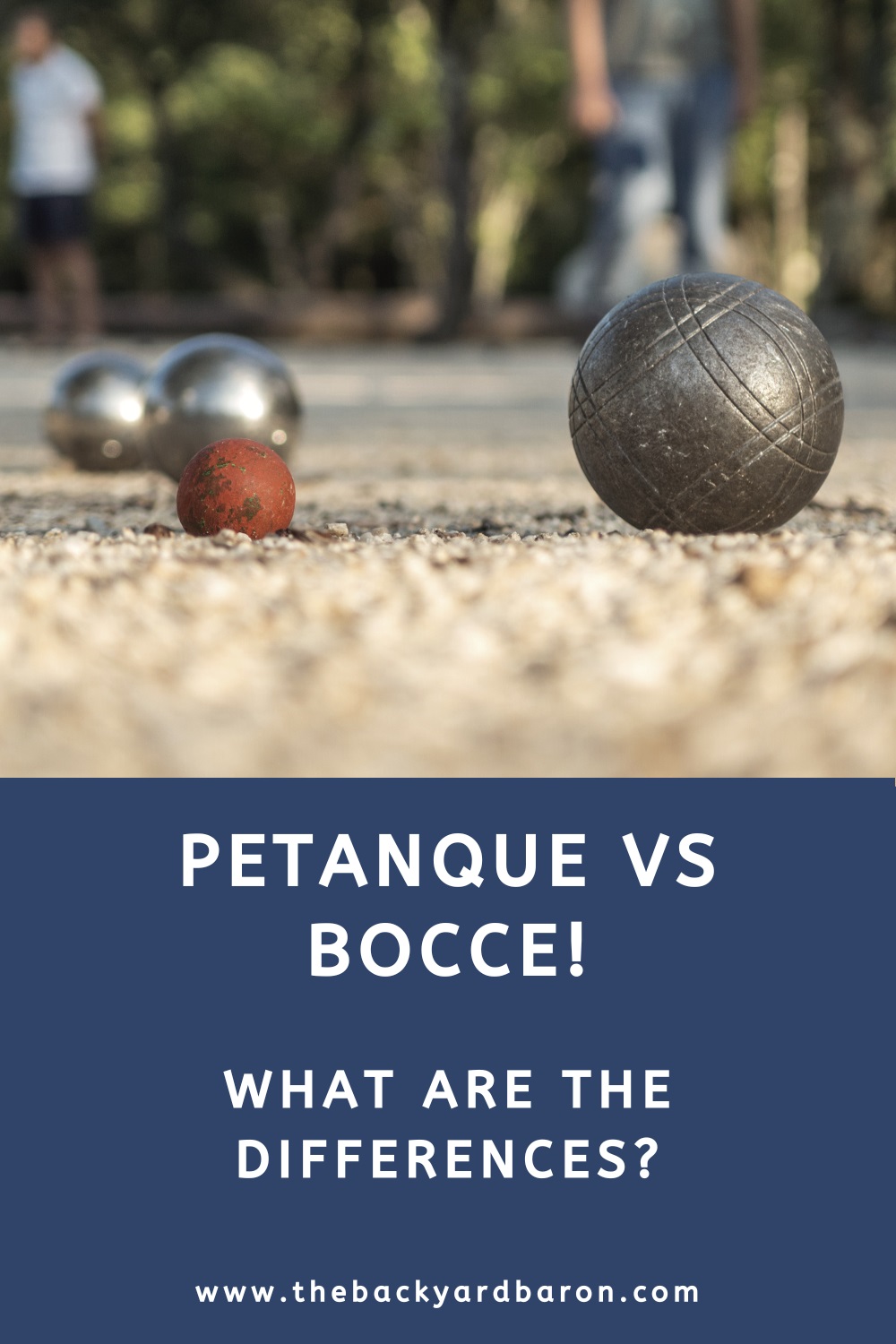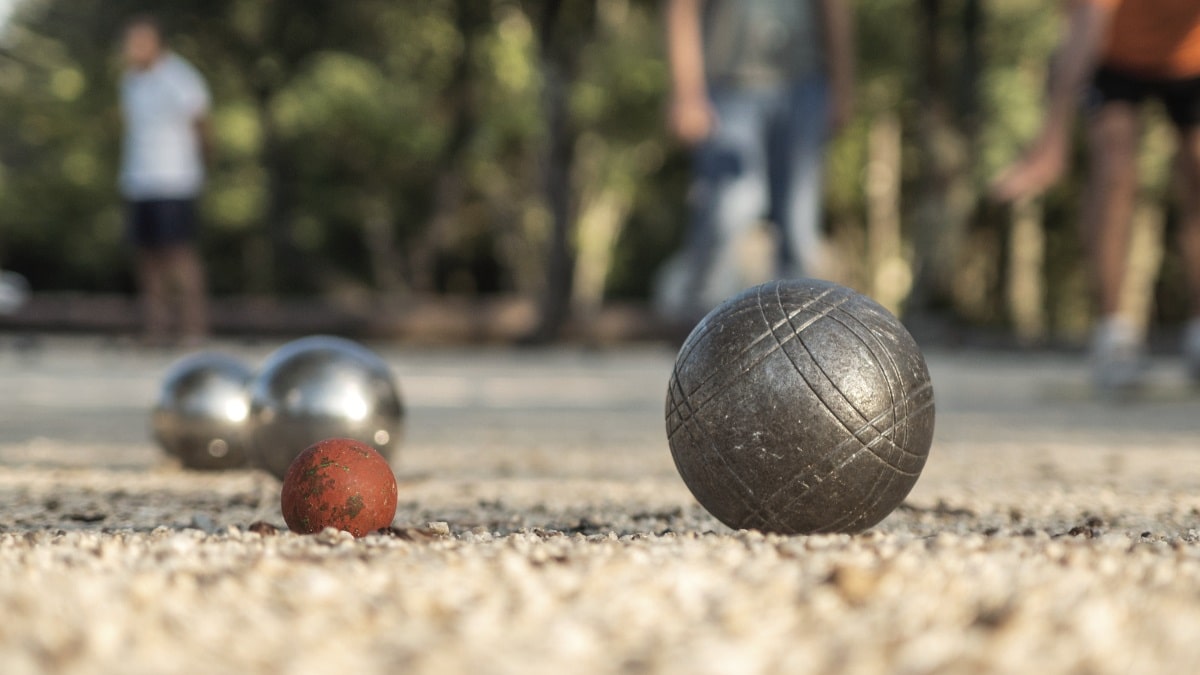Last updated: March 27, 2024
Petanque and Bocce ball are very similar, but there are a few key differences. This guide explains the two games and how they compare.
If you’re curious about boules sports, odds are you have heard of the games Petanque and Bocce Ball. These two games are often used interchangeably, but they’re definitely not the same.
In fact, the two games have entirely different origins and international fan bases to boot. In this article, I will outline the differences and similarities between Bocce and Petanque.
Petanque and Bocce Ball Explained
Before we discuss the main differences and similarities between Bocce and Petanque, let’s briefly explain these two fun yard games.
Lawn bowling is another boules game that often gets mixed up with Bocce. Read my guide to the differences between lawn bowling and Bocce ball to learn more.
What Is Petanque?
Petanque is a French “boules sport”.
Boules is a subset of sports that use balls (“boules” in French) in a bowling manner. We can include lawn bowling, boule lyonnaise, and Raffa among the popular boules sports.
So, what is unique about Petanque in the world of boules sports?
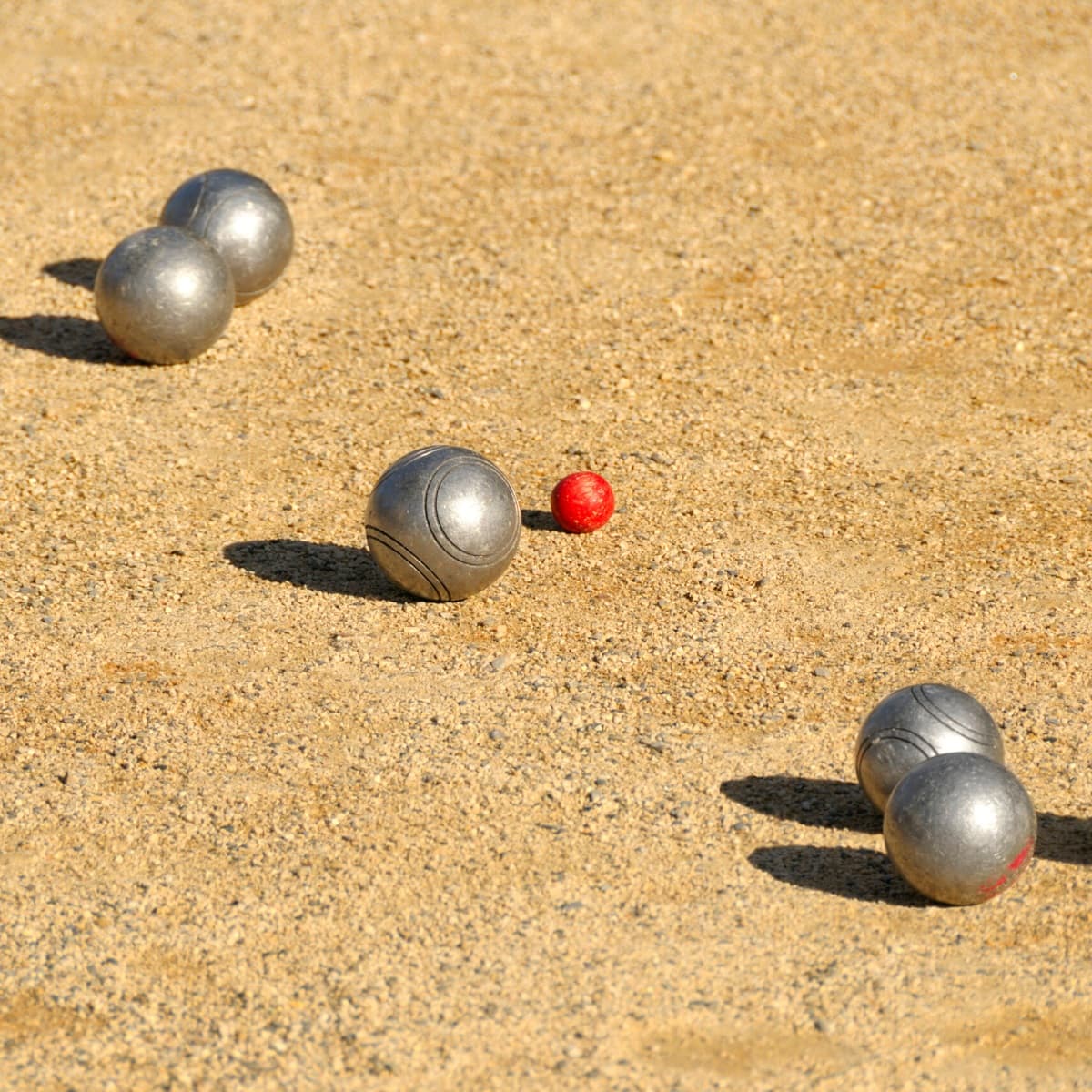
First of all, it’s thoroughly French. The game was invented in a French village in 1910 and quickly evolved into a hugely popular pastime in France and other parts of Europe.
Petanque is a true classic boules sport. The aim of the game is to throw a metal ball as close to a smaller target ball (the “jack” or “pallino”) as possible. If your ball ends up closer to the jack than your competitor’s ball, you win a point.
The game can be played with only two players or two teams consisting of two or three players. Players throw the balls from a small circle at one end of the court.
What Is Bocce Ball?
The Bocce ball game is very similar to Petanque. The basic concept is the same: players throw balls to a target ball with the aim of landing them as close to the target ball as possible.
Bocce ball is very easy to set up. All you need is a strip of grass or sand (or any other type of surface that is nice and flat), a Bocce ball set, and a set of clear instructions.
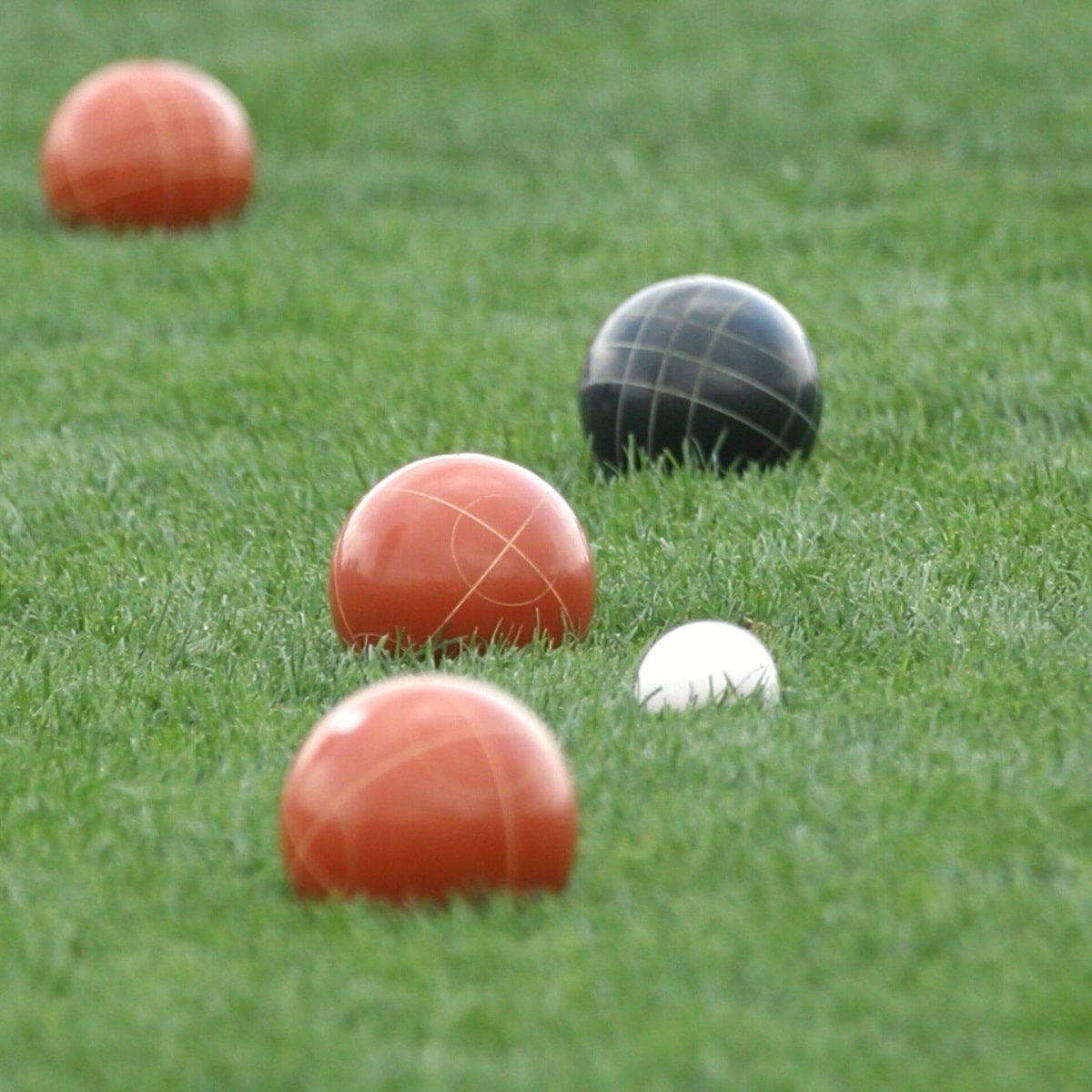
Bocce can be played with two to eight players in one-on-one, two-against-two, or four-versus-four teams. The team with the ball closest to the jack wins the round.
They receive one point for that ball and an additional point for every ball they get closer to the jack than the opposing team’s closest ball.
Petanque Versus Bocce
To the untrained eye, a game of Petanque and Bocce might seem like one and the same game. And to a large extent, that is true. After all, both games are boules sports.
But if we look closer, we will see that there are just as many things that make them unique as things that make them similar. Let’s find out!
1. Similarities
The core similarity between Petanque and Bocce is their use of balls and bowling motions. It’s no wonder why we call them both boules sports. From a distance, both games look eerily the same.
Players are relatively stationary when they throw (or roll) a ball onto the playing field towards a smaller ball, potentially hitting other balls in the process.
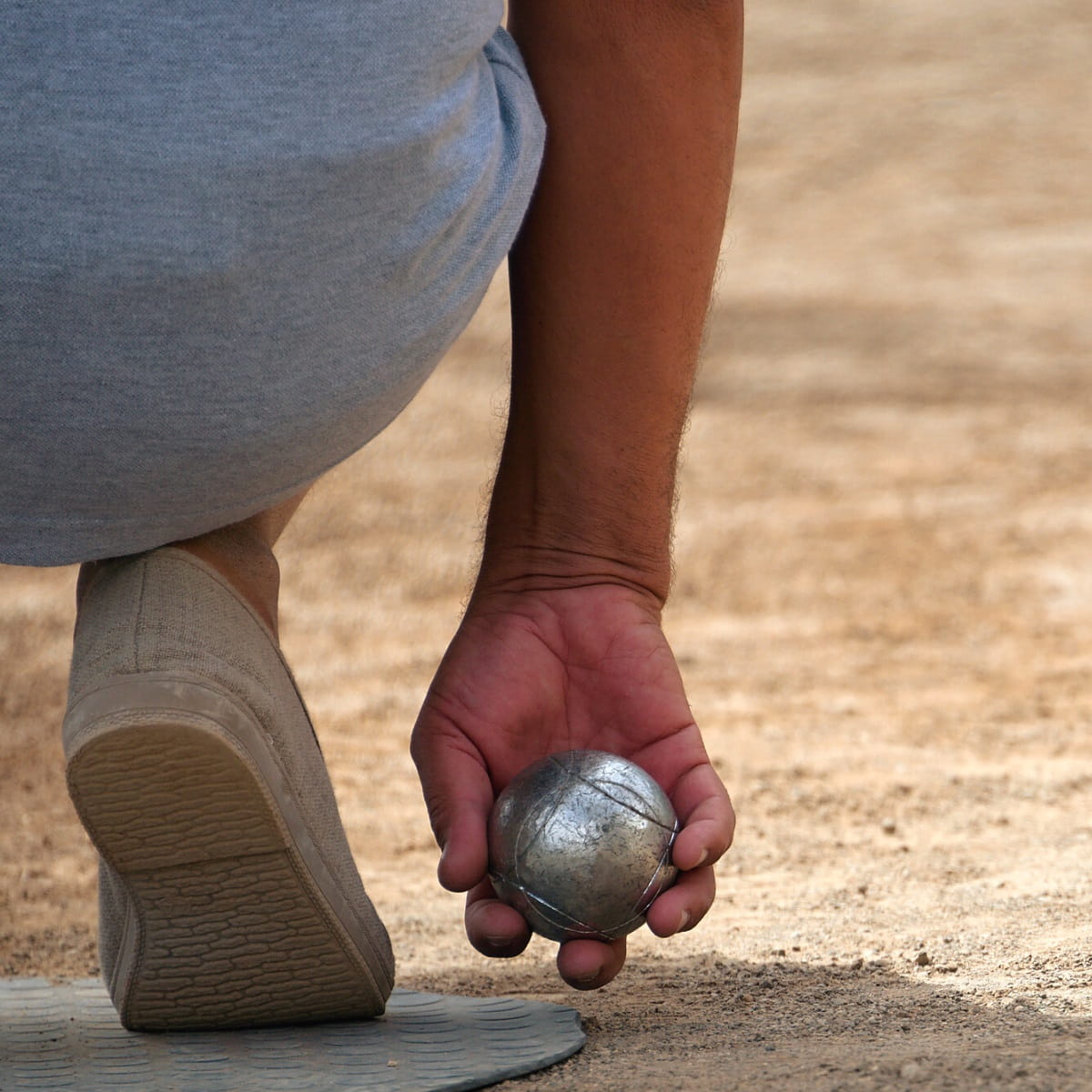
Petanque and Bocce work under the same basic principles as bowling, curling (for you winter sports enthusiasts), and even horseshoes. All these sports require players to hit or come close to a target by throwing an object.
A few more similarities between Petanque and Bocce are:
- Both games need two players or two teams.
- A smaller target ball is thrown onto the playing field.
- Players use a traditional underarm throw.
- The aim is to get your boules as close to the target ball as possible.
- Knocking away balls in play is part of the strategy.
2. Differences
Now that we know more about Petanque and Bocce Ball and their similarities, let’s take a closer look at some of the core differences.
Balls
Perhaps the best way to differentiate these sports is by starting with the ball or “boule”.
A Petanque boule is light at 1.5 lbs, small (73 mm diameter), made of metal (usually steel), often hollow or filled with sand, and uncolored.
Bocce balls are heavier at 2 lbs, and they’re also bigger (107 mm diameter). They come in wood, resin, or plastic varieties, all brightly colored.

Petanque balls are designed differently from Bocce balls. They are typically metallic in color and have patterns or grooves etched on the surface.
Bocce balls, on the other hand, are often colorful. They come in sets of eight. Blue, yellow, red, and green colors help with teams.
The throwing technique is different, too. A Petanque ball is easier to toss higher into the air, whereas Bocce balls are bowled or rolled.
In keeping with the boule types, players aren’t allowed to hit the small ball, while Bocce encourages it.
Playing Field
The playing fields are different, too. Petanque courts are usually about 15 meters (49 feet) long. Bocce courts, on the other hand, are almost twice as long (27 meters or 91 ft). Both courts are 4m wide.
But the differences between Petanque and Bocce ball aren’t just about the playing field, the rules, or the equipment.
Both games have long, proud legacies and traditions. And it is often those traditions that can make the two games quite different and unique.
Conclusion
Hopefully this Petanque vs Bocce ball guide has been helpful to you.
I enjoy both games equally, although I have a slight preference for Bocce, and that’s only because I play it more often.
If you’d like to hear more ideas for fun games to play, do check out my list of best backyard games for some inspiration.
